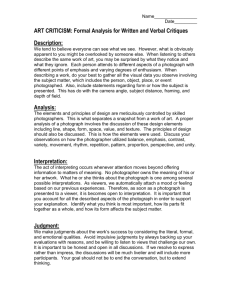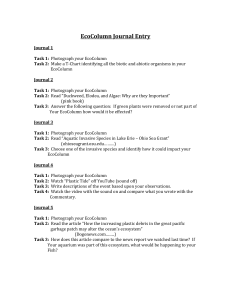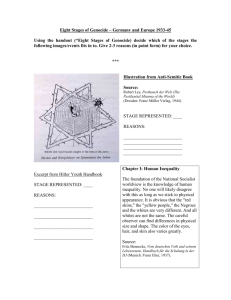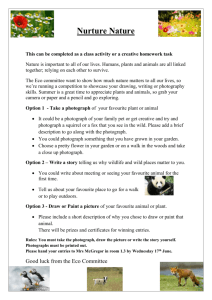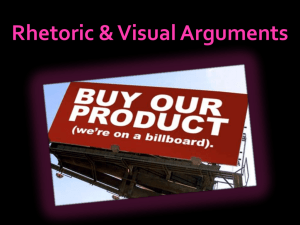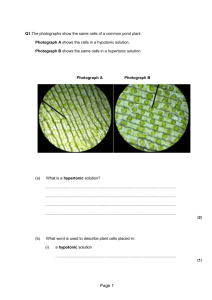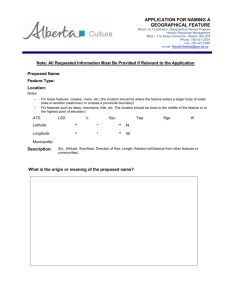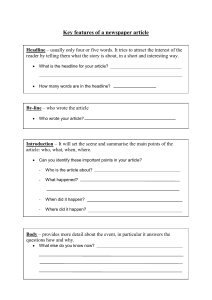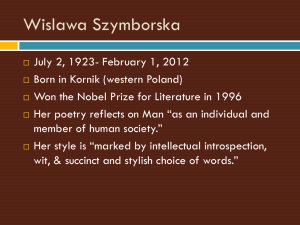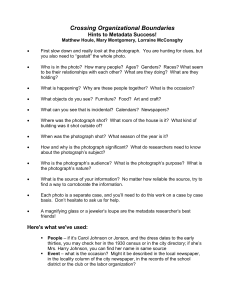Look at the following image and answer these questions…
advertisement
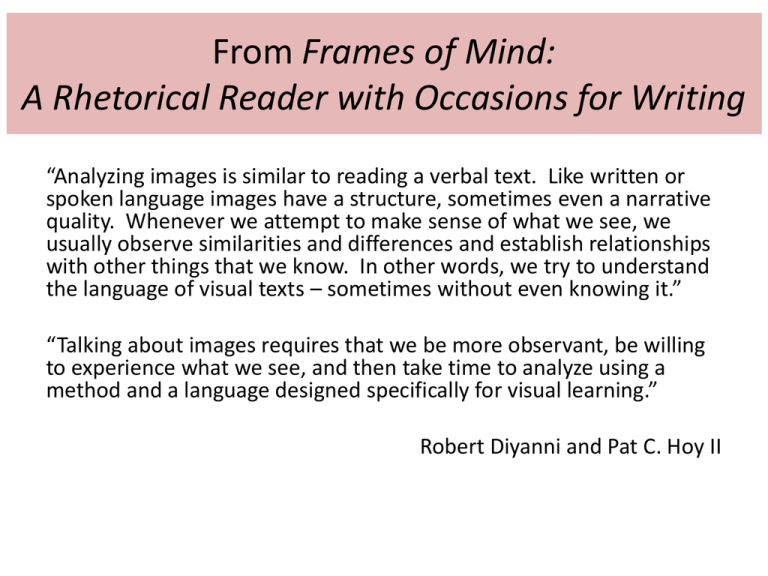
From Frames of Mind: A Rhetorical Reader with Occasions for Writing “Analyzing images is similar to reading a verbal text. Like written or spoken language images have a structure, sometimes even a narrative quality. Whenever we attempt to make sense of what we see, we usually observe similarities and differences and establish relationships with other things that we know. In other words, we try to understand the language of visual texts – sometimes without even knowing it.” “Talking about images requires that we be more observant, be willing to experience what we see, and then take time to analyze using a method and a language designed specifically for visual learning.” Robert Diyanni and Pat C. Hoy II If rhetoric is the art of communicating effectively and persuasively, it stands to reason that communicating visually can be as much an exercise in rhetoric as writing… Maps, charts, & graphs? Political cartoons? Posters &advertisements? Paintings & photographs? SURE!!! So let’s do a quick study of images… The Argument of Images • How is the picture composed? – What is your eye drawn to first? – What immediate impression is created? – What do you “read” in these images? • What is: – In the foreground? – In the background? – In or out of focus? – To the left, center and right? – What effect do these placements have on the message? Look at the following photograph and answer these questions… #1 The Argument of Images • Is any particular information (a name, face, or scene, for example) highlighted or stressed? • How are light (including shading) and color used? What effects are they intended to have on you? • What details are included or emphasized? What details are omitted? Is anything downplayed, ambiguous, confusing, or distracting? What is the effect? Look at the following photograph and answer these questions… #2 The Argument of Images • What effect does the choice of medium have on the message of the visual text? How would the message be altered if different media were used? • If words accompany your text, what is their role? Do they clarify or reinforce? • What does the visual text assume about its viewers – and about what they know and agree with? Look at the following image and answer these questions… #3 The Argument of Images • What overall impression does the image create in you? • What argumentative purpose does the image convey? • What cultural values or ideals does the image evoke or suggest? Does the image reinforce those values or question them? (What is your evidence?) • What does the image do to strengthen the argument? Look at the following photograph and answer these questions… #4 #5 “Young Interracial Couple” –Bruce Davidson (1992) Answer the following questions for this photograph… • Look for lines and movements (maybe start with their faces?)… How do those lines break up the photograph? What do you see in the various sections? • How would you describe the expression on the girl’s face? The boy’s? • Anna Norris wrote that “pictures are fashioned to serve a particular purpose.” What do you think Davidson’s purpose was? What does the photograph suggest about the couple’s relationship? (What’s your evidence?) Now take a crack at ONE of the following pictures… (Make sure you tell me which picture you did! ) Use the following areas to guide your analysis… Identify: • Subject (Who/what is the focus? When? Where? Why?) • Contents (What are the major components of the image? Are there words? Does the font suggest anything? What is the action/pace of the image?) • Attitudes (Is there an established mood? Are there gestures/body language/facial expressions? How is the environment portrayed? What is the connotation? Is size or position relevant?) • Narrative (Is there conflict present? Are there characters that represent relationships? Is there evidence of historical events?) • Symbolism (Are there any abstract concepts? Do colors play a part? Are there notable contrasts in light/dark? Are there obvious lines/patterns?) #6 #7 #8 #9 #10 #11 #12 #13 #14 #15 #16


